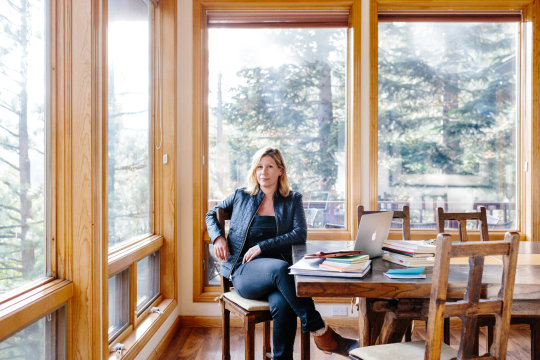#ThisIsHowTheyTellMeTheWorldEnds
Explore tagged Tumblr posts
Text
5 Questions with Nicole Perlroth, Author of This Is How They Tell Me the World Ends

Nicole Perlroth covers cybersecurity and digital espionage for The New York Times. Her first book, This Is How They Tell Me The World Ends: The Cyber Weapons Arms Race, about the global cyber arms race, is new from Bloomsbury Publishing this month. A Bay Area native, Perlroth is a guest lecturer at the Stanford Graduate School of Business and a graduate of Princeton University and Stanford University.
Nicole Perlroth is in conversation with David Sanger to discuss her new book This Is How They Tell Me the World Ends in our City Lights LIVE! discussion series on Wednesday, February 10th
****
Where are you writing to us from?
My family’s cabin in the Sierras. I was born in the Bay Area and don't plan on ever leaving, but a burst pipe sent us scrambling to the mountains.
What’s kept you sane during the pandemic?
My two-year-old. He has no clue we are living through a global pandemic. The other night, he commanded us to turn on “Yellow Submarine" and start dancing. We were exhausted, but that impromptu dance party was the perfect antidote to being cooped up for ten months. Highly recommend.
What are 3 books you always recommend to people?
The Godfather by Mario Puzo. (I read it every year). Red Notice: A True Story of High Finance, Murder, and One Man's Fight for Justice by Bill Browder and Flash Boys: A Wall Street Revolt by Michael Lewis. I'm fascinated by people who go to extremes to seek justice. And In very different ways, that is what each of those three books is about.
Which writers, artists, and others influence your work in general, and this book, specifically?
Nora Ephron. I simply love how disarming and authentic she was. It was her super power. There's so much pressure to be objective and neutral that, especially for female journalists, it can have the effect of wiping away your personality quirks. Nora didn't let it. I don't either. And it was disarming voices like hers that helped me tell the story of the cyber arms market in the most accessible way possible.
I also found myself flipping through Flash Boys all the time. It was a useful template in that it was a character-driven account of a highly technical subject— high-speed trading—that most people had heard of, but never understood just how screwed they were getting. That, in a nutshell, is my book. We've all heard of cybersecurity and data breaches but we never knew how screwed we were getting, in many cases by our own government.
As for art! I happened upon the MashUp exhibit at the Vancouver Art Gallery early on in the process of writing this book. I was in Vancouver for a hacking conference and ended up spending an entire day at the exhibit. It featured Picasso and Tarantino and Jamaican dub music and there was an entire room dedicated to David Byrne's collaboration with Brian Eno, and I walked out of that exhibit thinking, "They were all hackers." They took art and film and music that had traditionally functioned one way and mashed it up and repurposed it for an entirely different genre or purpose, which is essentially the definition of hacking. The word "hacker" has always had a negative connotation, but really hackers are just people who take a system and use it in a way that it was never designed to be used. What I saw that day really helped inform the chapters I wrote about the early days of hacking.
If you opened a bookstore, where would it be located, what would it be called, and what would your bestseller be?
It would be high up on a mountain peak in the Swiss Alps. It would be called “Piqued.” There would be fondue and blankets and a fire going at all times. Our bestsellers would be Into Thin Air, Hatchet, West with the Night and Call of the Wild. I have been transporting myself to that bookstore for most of COVID.
#5questions#NicolePelroth#DavidSanger#ThisIsHowTheyTellMeTheWorldEnds#Journalism#BloomsburyBooks#CityLights
6 notes
·
View notes